Birds
The Arroyo Seco has just about everything for a terrestrial birder. Stretching about 15 miles from its headwaters at Red Box in the San Gabriel Mountains to its confluence with the Los Angeles River, the Arroyo Seco passes by or through Switzer’s campground, Jet Propulsion Laboratory, Hahamongna Watershed Park, Brookside Golf Course, the Rose Bowl, Lower Arroyo Seco Park, and Debs Regional Park. The habitats it travels through include; coniferous and deciduous forest; chaparral; oak woodland; riparian; pond, rivers and streams; eucalyptus groves; and manicured parks.
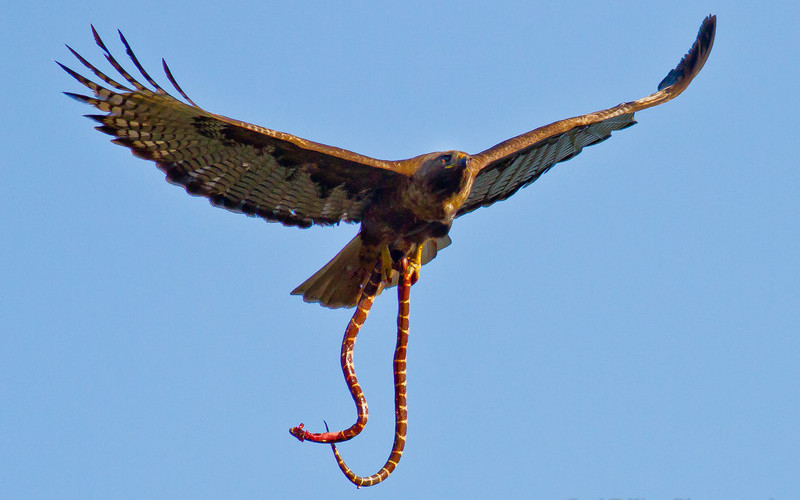
Red Tailed Hawk
Buteo jamaicensis
This is probably the most common hawk in North America. If you’ve got sharp eyes you’ll see several individuals on almost any long car ride, anywhere. Red-tailed Hawks soar above open fields, slowly turning circles on their broad, rounded wings. Other times you’ll see them atop telephone poles, eyes fixed on the ground to catch the movements of a vole or a rabbit, or simply waiting out cold weather before climbing a thermal updraft into the sky.
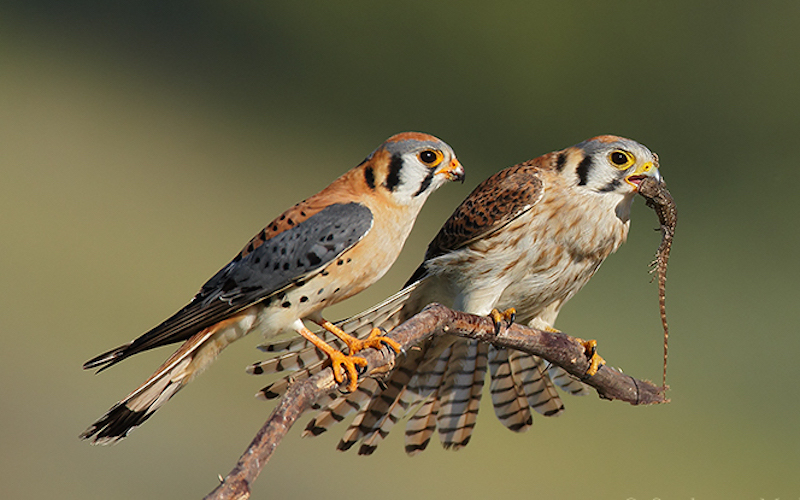
American Kestrel
Falco sparverius
North America’s littlest falcon, the American Kestrel packs a predator’s fierce intensity into its small body. It's one of the most colorful of all raptors: the male’s slate-blue head and wings contrast elegantly with his rusty-red back and tail; the female has the same warm reddish on her wings, back, and tail. Hunting for insects and other small prey in open territory, kestrels perch on wires or poles, or hover facing into the wind, flapping and adjusting their long tails to stay in place. Kestrels are declining in parts of their range; you can help them by putting up nest boxes.
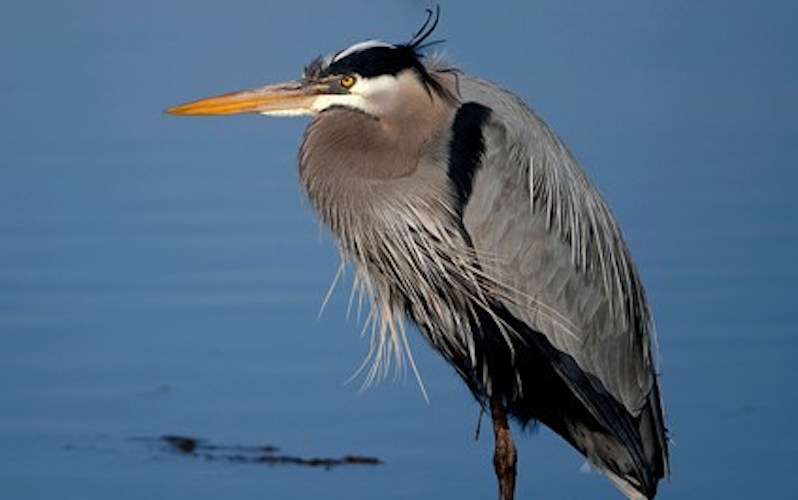
Great Blue Heron
Ardea herodias
Whether poised at a river bend or cruising the coastline with slow, deep wingbeats, the Great Blue Heron is a majestic sight. This stately heron with its subtle blue-gray plumage often stands motionless as it scans for prey or wades belly deep with long, deliberate steps. They may move slowly, but Great Blue Herons can strike like lightning to grab a fish or snap up a gopher.
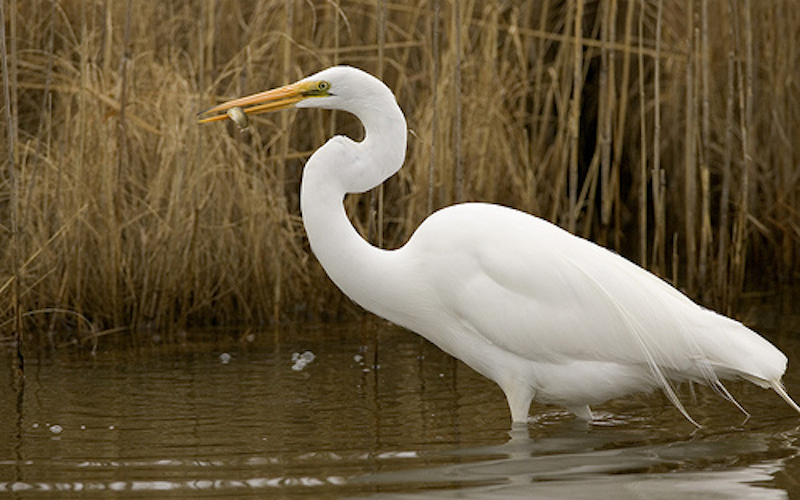
Great Egret
Ardea alba
The elegant Great Egret is a dazzling sight in many a North American wetland. Slightly smaller and more svelte than a Great Blue Heron, these are still large birds with impressive wingspans. They hunt in classic heron fashion, standing immobile or wading through wetlands to capture fish with a deadly jab of their yellow bill. Great Egrets were hunted nearly to extinction for their plumes in the late nineteenth century, sparking conservation movements and some of the first laws to protect birds.
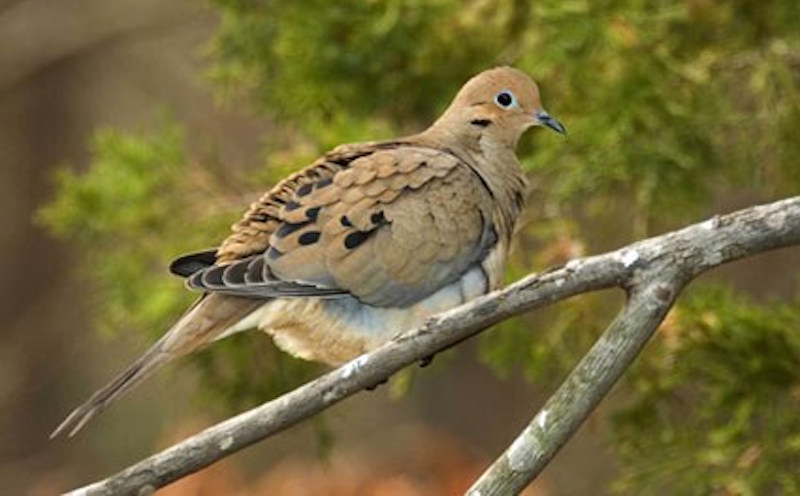
Mourning Dove
Zenaida macroura
A graceful, slender-tailed, small-headed dove that’s common across the continent. Mourning Doves perch on telephone wires and forage for seeds on the ground; their flight is fast and bullet straight. Their soft, drawn-out calls sound like laments. When taking off, their wings make a sharp whistling or whinnying. Mourning Doves are the most frequently hunted species in North America.

Anna's Hummingbird
Calypte anna
Anna’s Hummingbirds are among the most common hummingbirds along the Pacific Coast, yet they're anything but common in appearance. With their iridescent emerald feathers and sparkling rose-pink throats, they are more like flying jewelry than birds. Though no larger than a ping-pong ball and no heavier than a nickel, Anna’s Hummingbirds make a strong impression. In their thrilling courtship displays, males climb up to 130 feet into the air and then swoop to the ground with a curious burst of noise that they produce through their tail feathers.

Allen's Hummingbird
Selasphorus sasin
The feistiest hummingbird in North America. The brilliant orange male and the green-and-orange female Rufous Hummingbird are relentless attackers at flowers and feeders, going after (if not always defeating) even the large hummingbirds of the Southwest, which can be double their weight. Extremely similar in appearance to the widespread Rufous Hummingbird, the Allen's Hummingbird breeds only along a narrow strip of coastal California and southern Oregon.

Cliff Swallow
Petrochelidon pyrrhonota
Busy flocks of Cliff Swallows often swarm around bridges and overpasses in summer, offering passers-by a chance to admire avian architecture and family life at once. Clusters of their intricate mud nests cling to vertical walls, and when a Cliff Swallow is home you can see its bright forehead glowing from the dim entrance. These common, sociable swallows are nearly always found in large groups, whether they’re chasing insects high above the ground, preening on perches, or dipping into a river for a bath.
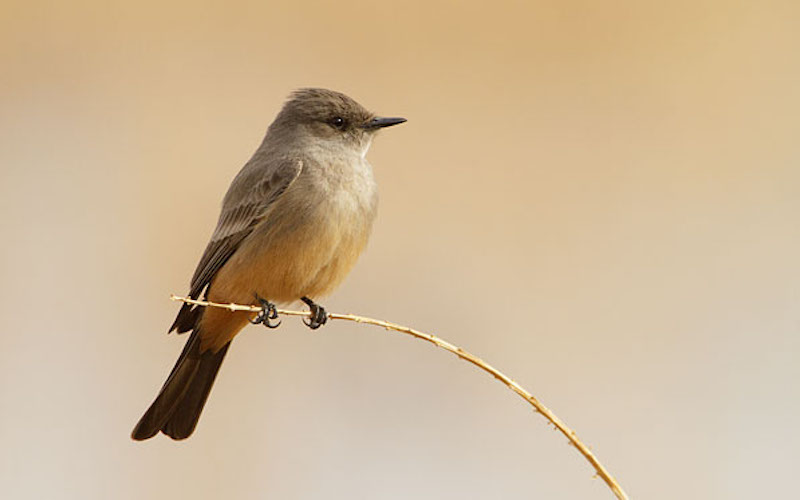
Say's phoebe
Sayornis saya
Like other phoebes, the Say’s Phoebe is seemingly undaunted by people and often nests on buildings. These open-country birds have cinnamon-washed underparts and a rather gentle expression. They sally from low perches to snatch insects in midair or pounce on them on the ground. Say’s Phoebes often pump their tails while perched on a wire, fence post, or low bush. They breed farther north than any other flycatcher and are seemingly limited only by the lack of nest sites.
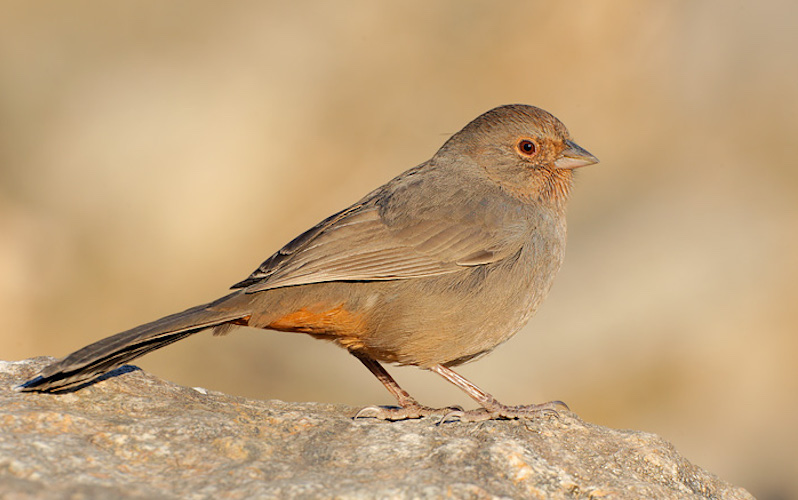
California towhee
Pipilo maculatus
Your first encounter with a California Towhee may be prompted by a tireless knocking at your window or car mirror: these common backyard birds habitually challenge their reflections. But California Towhees are at heart birds of the tangled chaparral and other hot scrublands of California and Oregon. You’re as likely to hear their bright chip notes along a secluded trail as on your way out your front door.
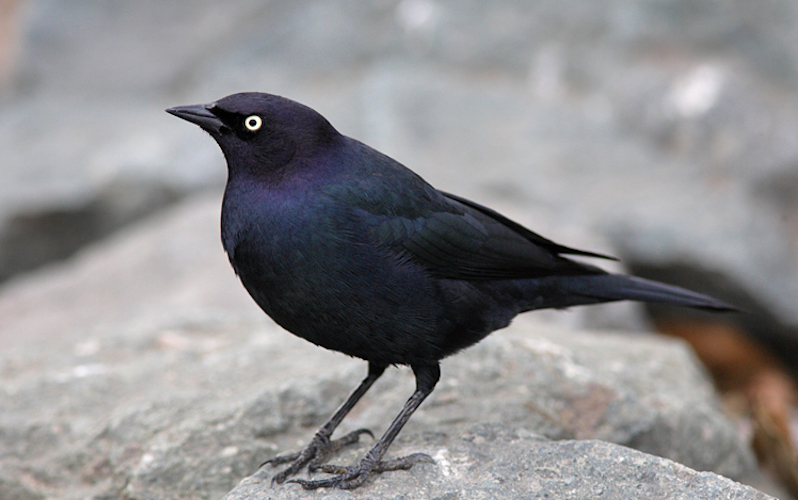
Brewer's Blackbird
Euphagus cyanocephalus
A bird to be seen in the full sun, the male Brewer’s Blackbird is a glossy, almost liquid combination of black, midnight blue, and metallic green. Females are a staid brown, without the male’s bright eye or the female Red-winged Blackbird’s streaks. Common in towns and open habitats of much of the West, you’ll see these long-legged, ground-foraging birds on sidewalks and city parks as well as chuckling in flocks atop shrubs, trees, and reeds.

House Finch
Carpodacus mexicanus
The House Finch is a recent introduction from western into eastern North America (and Hawaii), but it has received a warmer reception than other arrivals like the European Starling and House Sparrow. That’s partly due to the cheerful red head and breast of males, and to the bird’s long, twittering song, which can now be heard in most of the neighborhoods of the continent.
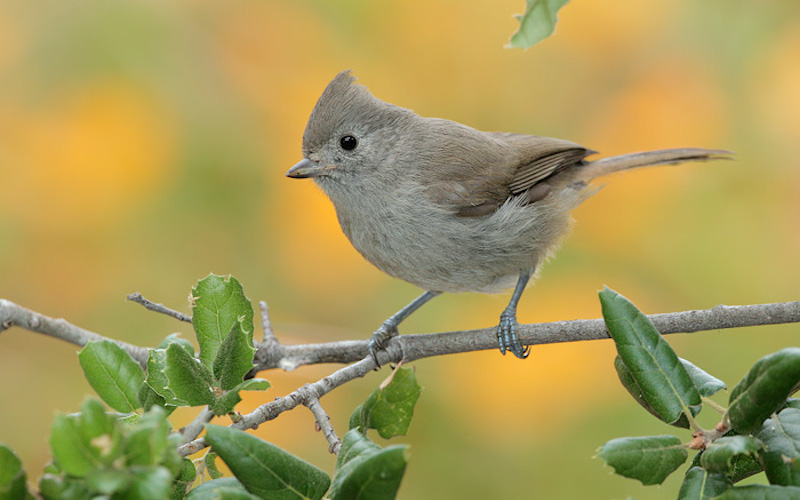
Oak Titmouse
Baeolophus inornatus
Nondescript save for its crest, the Oak Titmouse might not wow many bird watchers at first sight. But these vocal, active birds characterize the warm, dry oak woods from southern Oregon to Baja California—they’re “the voice and soul of the oaks,” according to one early naturalist. Mates pair for life, and both partners noisily defend their territory year-round.
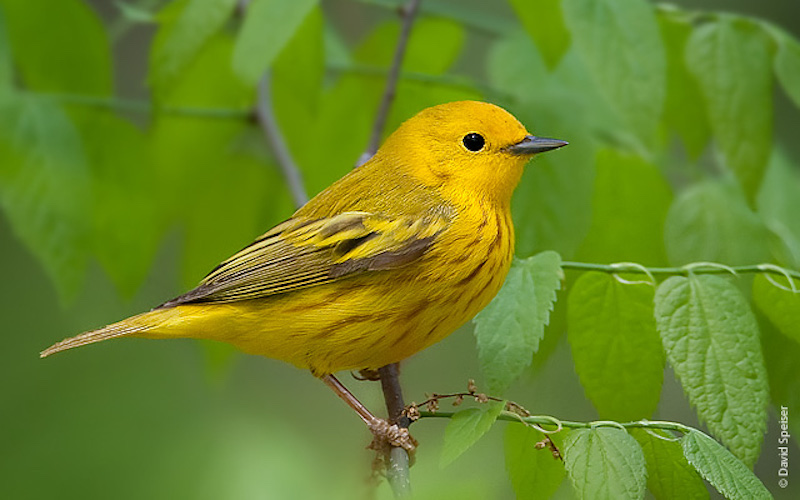
Yellow Warbler
Dendroica petechia
North America has more than 50 species of warblers, but few combine brilliant color and easy viewing quite like the Yellow Warbler. In summer, the buttery yellow males sing their sweet whistled song from willows, wet thickets, and roadsides across almost all of North America. The females and immatures aren’t as bright, and lack the male’s rich chestnut streaking, but their overall warm yellow tones, unmarked faces, and prominent black eyes help pick them out.
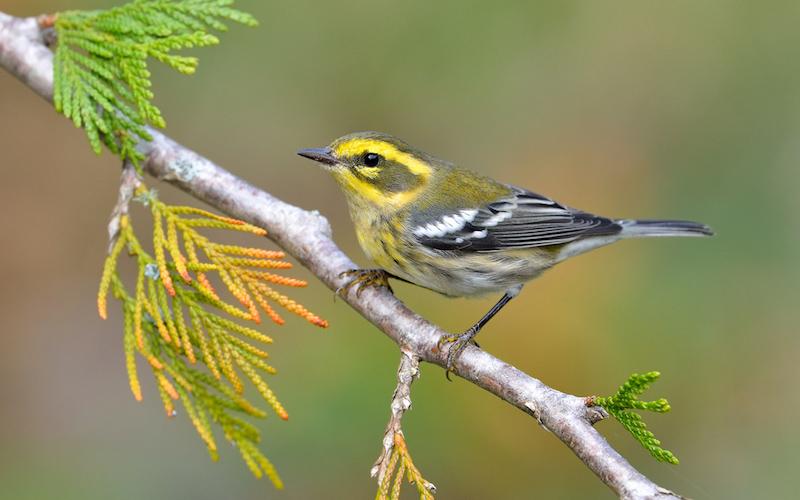
Townsend's Warbler
Dendroica townsendi
A bird of the Pacific Northwest, the Townsend's Warbler nests in coniferous forests from Alaska to Oregon. It winters in two distinct areas: in a narrow strip along the Pacific Coast, and in Mexico and Central America.

White Crowned Sparrow
Zonotrichia leucophrys
White-crowned Sparrows appear each winter over much of North America to grace our gardens and favorite trails (they live in parts of the West year-round). The smart black-and-white head, pale beak, and crisp gray breast combine for a dashing look – and make it one of the surest sparrow identifications in North America. Watch for flocks of these sparrows scurrying through brushy borders and overgrown fields, or coax them into the open with backyard feeders.
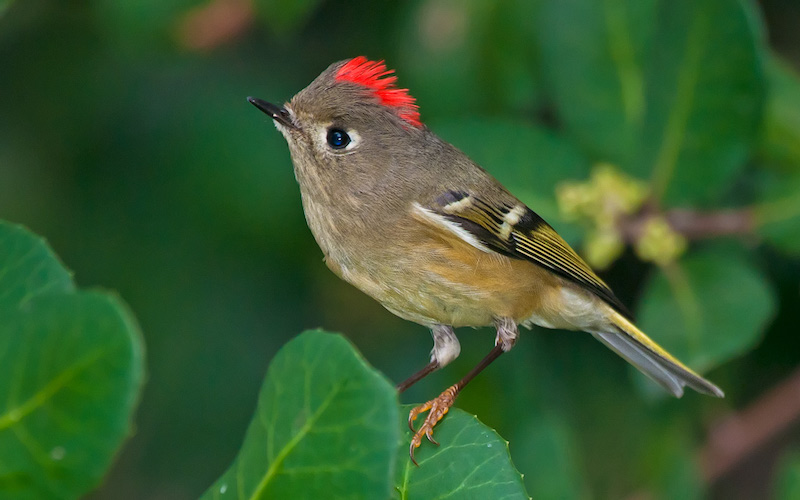
Ruby Crowned Kinglet
Regulus calendula
A tiny bird seemingly overflowing with energy, the Ruby-crowned Kinglet forages almost frantically through lower branches of shrubs and trees. Its habit of constantly flicking its wings is a key identification clue. Smaller than a warbler or chickadee, this plain green-gray bird has a white eyering and a white bar on the wing. Alas, the male’s brilliant ruby crown patch usually stays hidden—your best chance to see it is to find an excited male singing in spring or summer.
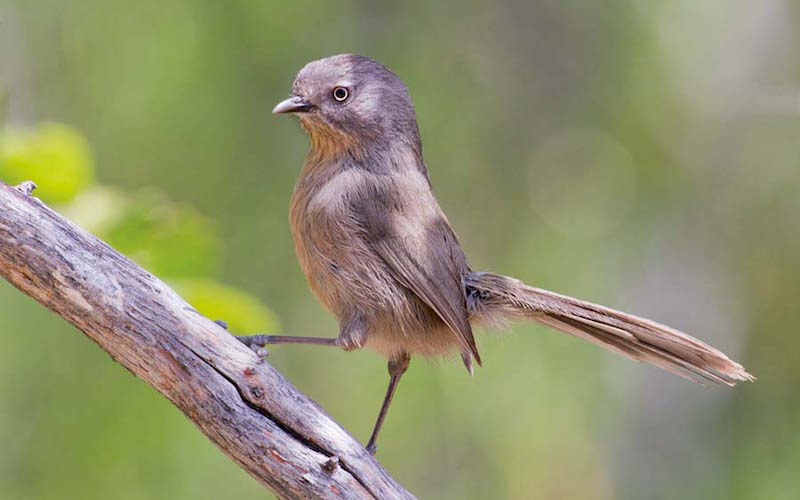
Wrentit
Chamaea fasciata
The Wrentit’s characteristic bouncing-ball song is a classic sound of coastal scrub and chaparral along the West Coast. Seeing a Wrentit is a challenge as they sneak around inside shrubs, rarely making an appearance. Males and females sing at all hours of the day, all year long, most often hidden from view. With patience, a brownish-gray bird with a piercing white eye might pop out of the shrubs, cock its long tail off to the side, and sing
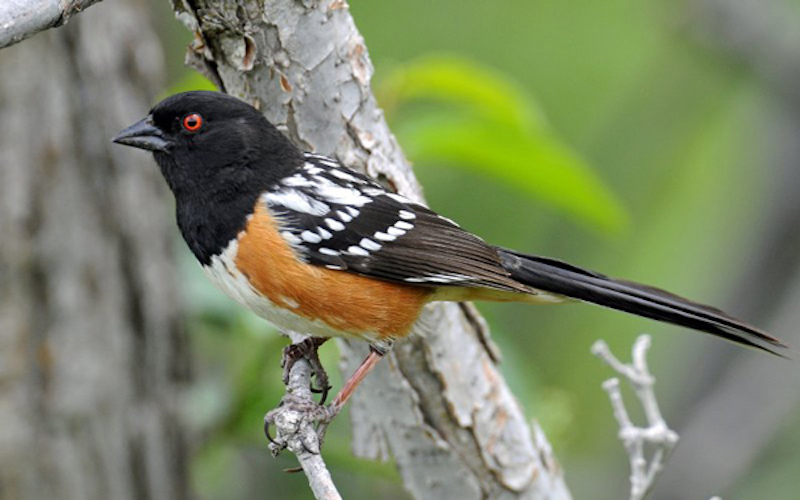
Spotted Towhee
Pipilo maculatus
The Spotted Towhee is a large, striking sparrow of sun-baked thickets of the West. When you catch sight of one, they’re gleaming black above (females are grayish), spotted and striped with brilliant white. Their warm rufous flanks match the dry leaves they spend their time hopping around in. The birds can be hard to see in the leaf litter, so your best chance for an unobstructed look at this handsome bird may be in the spring, when males climb into the shrub tops to sing their buzzy songs.